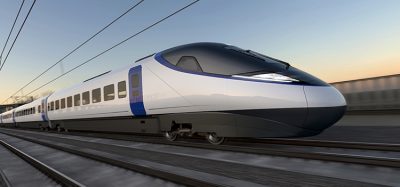The imminent inauguration of the Bothnia Line
Posted: 27 September 2008 | | No comments yet
Building of the Bothnia Line began on a modest scale in 1999. In October 2008, Stage 1 is expected to be taken into operation – this is when a subsection is being opened for goods traffic. The entire line will be ready for goods and passenger services in autumn 2010.
Building of the Bothnia Line began on a modest scale in 1999. In October 2008, Stage 1 is expected to be taken into operation – this is when a subsection is being opened for goods traffic. The entire line will be ready for goods and passenger services in autumn 2010.
Building of the Bothnia Line began on a modest scale in 1999. In October 2008, Stage 1 is expected to be taken into operation – this is when a subsection is being opened for goods traffic. The entire line will be ready for goods and passenger services in autumn 2010.
Recent opinion polls show that people living in the vicinity of the line have never been more positive about the project. 81% give the thumbs up – a very high figure.
The Bothnia Line, an integral part of the European rail network, is a new railway in northern Sweden. Its building was prompted by the need for such a facility along the coast. The Bothnia Line aims to enable higher efficiency in goods transport and establish regional passenger services and high-speed inter-regional traffic. Functionally, the new railway and the old limited-capacity main line will form a double-track network. This will reduce the vulnerability of rail traffic. Furthermore, transport will be faster and safer. The arrival of the Bothnia Line also brings major environmental benefits.
State client
Finance, detailed planning, procurement, construction, test operation and the leasing out of the finished line are the responsibility of a special company, Botniabanan AB. This is 91% owned by the Swedish state and 9% by four municipalities. Having planned the line and been in charge of land acquisition and obtaining the necessary permissions, the Swedish Rail Administration is to take the 40-year lease. The municipalities concerned are responsible for, amongst other things, traffic and the building of railway stations.
Passing through Örnsköldsvik and other important points, the Bothnia Line is a 190km-long single-track railway from Umeå to Nyland, northwest of Kramfors. Here, it connects to the Ådal Line, which itself links up with the East Coast Line. The Bothnia Line has 22km-long sidings, 140 bridges and, at a total length of 25km, 16 tunnels. All crossings of the Bothnia Line are of the split-level type.
Groundbreaking project
In many respects, the Bothnia Line is a groundbreaking project in Sweden. It is the first large infrastructure project for which all types of permission have had to be sought under Sweden’s new Environmental Code. It is the first to be built for passenger trains with a maximum speed of 250 kph and it is also the first to adopt the new European traffic management system (ERTMS).
Socio-economic analyses show that the Bothnia Line will be profitable. Costing SEK 13.2 billon (January 2003 cost levels), the line is being financed by loans. This is uncommon in Sweden. At current values, 82% of the work has been completed.
Compared with the peak years of between 2004 and 2006, activity has decreased. Presently, there are approximately 650 people working in the project, compared with 1,650 in 2005. As regards construction, work is winding down in the line’s southern section – it has already been completed in the town of Örnsköldsvik and north of this. Summer 2008 has seen extremely wide-ranging track laying and other railway-specific work in a northward direction. Intensive construction is now concentrated on the final ten kilometres in to Umeå. This includes, amongst other things, the building of a bridge across the Umeälven river. At 1,937 metres, this will be northern Sweden’s longest bridge and Sweden’s second longest railway bridge.
By the river, the line crosses a Natura 2000 site. This routing has been appealed against several times in various courts. In May, the judgements of the environmental courts came into legal force and there now only remains one case in front of the Supreme Administrative Court.
Rail grinding on the Bothnia Line
Rail Weld Sweden AB (RWS) in Borlänge has recently won the contract to carry out rail grinding on the Bothnia Line from Västeraspby in the south to Gimonäs in the north. New technology is being employed and instead of using the most usual method, which involves a grinding cup, the rails are to be milled.
The contract is valued at SEK 9.5 million and RWS’s bid was chosen on the criterion that it was the lowest.
A specially equipped vehicle is used for milling and the results are just as good as those achieved with rail grinding, but the work is quieter and spark formation is less.
Transport, planning, measuring and documentation are included in the contract. The work will be executed in two stages. Stage 1 between Västeraspby (municipality of Kramfors) and Husum (municipality of Örnsköldsvik) is to be carried out in autumn 2009. Stage 2 between Husum and Gimonäs (municipality of Umeå) is to be completed early in the spring of 2010.
Commitment and perseverance
Intensive work is in progress in the world of the Bothnia Line, all to do with the construction of the railway. More than 8,000 man-years of work will be carried out on building production, and quite a number of subcontractors will be taken on by the construction companies.






